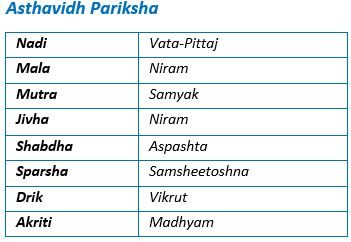A successful Ayurvedic intervention of Pakshaghata (Cerebro-Vascular Stroke) - A Case Report
DOI:
https://doi.org/10.21760/jaims.8.7.36Keywords:
Pakshaghata, Vatavyadhi, Shaman, Shodhan ChikitsaAbstract
Pakshaghata (Stroke) is one of the most common causes of death especially in the elderly. Vataja Nanatmaja Vyadhi, Pakshaghata is a Mahavatavyadhi. Pakshaghata has been linked to hemiplegia, a type of paralysis caused by a cerebrovascular accident or stroke. Paksha refers to a man's flank or side, while Ghata, Aghata, and Vadha refer to killing, destruction, and paralysis. Pakshaghata mainly occurs due to the obstruction of cerebral blood vessels, ischemia, and lack of glucose metabolism and weakness of nerve cells. Ayurveda offers various treatment modalities for the management of Pakshaghata such as; use of herbs & formulation, Yoga and Shodhana Chikitsa. Present article described various approaches of Ayurveda for the management of Pakshaghata including natural herbs and Shodhana Chikitsa. Treatment protocol was Snehana, Mridu Swedana, Basti Karma, Murdhani Taila (Shirodhara) along with internal medication which is mentioned by Acharyas. Utilizing the basic concept of Ayurveda (Nidanpanchaka), drugs with potent properties such as Vataghna, Bruhana, Ushna Veerya were utilized to manage this condition which showed promising results. This reveals that Ayurveda treatment modalities can play a significant role in treatment of Stroke (Pakshaghata).
Downloads
References
YT Acharya, Editor, Caraka, Caraka Samhita Chikitsasthana 26/77-103 Choukhambha Krishnadas Academy, Reprint 2006. 602-605
YT Acharya Editor, Caraka, Caraka Samhita Sutrasthana 26/4 Choukhambha Krishnadas Academy, Reprint 2006. 144.
Pandit Parasuram Sastri Editor, Sarngadhara, Sarngadharasamhita Pradhamakhanda 4/9-10 Choukhambha Surabharati Prakashan, Varanasi, 2006. 36-37.
Walter Johnson, Oyere Onuma, Mayowa Owolabi & Sonal Sachdev. Bulletin of the World Health Organization 2016.
K. Nishteswar, Ayurvedic Management of Stroke (Hemiplegia), Choukhambha Krishnadas Academy Varanasi, 2nd Edition, 2009. 61.
G.S Pandey Editor, Bhavamisra, Bhavaprakasa Nighantu, 1/196. Chowkambha Bharathi Academy, Varanasi, 2010. 111.
Ehrlich ME, Liang L, Xu H, et al. Intravenous Tissue-Type Plasminogen Activator in Acute Ischemic Stroke Patients with History of Stroke Plus Diabetes Mellitus. Stroke. 2019;50(6):1497-1503. doi:10.1161/STROKEAHA.118.024172
Nicki R. Colledge, Brian. R. Walker, Stuart H. Ralston Ian D. Penman, editors. Davidsonʼs principles & practice of medicine. 22nd edition. Churchil livingstone elsevier. p-1237.
Agnivesha. CharakaSamhita. Panday Kashinnath & Chaturvedi Gorakhnath, editor. Sutra Sthana, 20/11. Varanasi: Chaukhambha Sanskrit Series Office; 2013.p-399.
Susruta. Susruta Samhita. Shri Dalhanacharya, editor. Chikitsa Sthana, 5/19, Varanasi: Chaukhambha Surbharti publisher; 2018. p-43.
Agnivesha. Charaka Samhita. Panday kashinnath & Chaturvedi Gorakhnath, editor. Chikitsa Sthana, Vatavyadhichikitsa 28/100. Varanasi: Chaukhambha Sanskrit Series Office; 2013. p-795.
Mohan M, Sawarkar P. Ayurvedic management of Gridhrasi with special respect to sciatica: a case report. J Indian Sys Medicine 2019;7:131-8.















